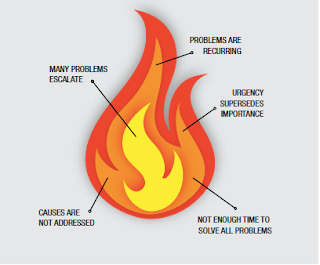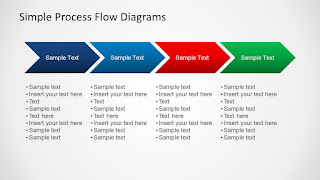Happy Memorial Day weekend everyone,
This post is to have a little fun while we learn, and if any of you have been in our sessions the past few years you will know what this means. It's the funny things that often allow us to remember important thinking as we learn and practice lean in our daily activities across all functional areas of our organization.
We all should be familiar with PDCA (Plan - Do - Check - Action), its a systematic approach to problem solving among other business practices at a micro and macro level. In this blog we will focus a bit more on the micro aspect.
So if you think of the 8 steps of problem solving we are looking at framing problems based on a proper go and see approach. We determine from as much data and facts what is our current state. This doesn't have to be manufacturing, it can be any process that creates an output, service, end result or product. Material and Information (M & I) flow can be involved, or perhaps the "day in the life" of a document (hard-copy or e-copy), or a process of approval. Once we have determined our current state and measured it against a known standard then we should have a quantifiable gap.
What we find is most are unable to measure effectively so assumptions are made and problem solving begins and our result could be from shear luck. As my trainers would say "lucky isn't sustainable" especially if we are running a business. This thinking allows us to only get a symptom of the problem not the root cause and it normally just returns. Also if we don't have a known standard, then start to document what should be happening in a process (based on customer internally and externally needs it to be). Often I refer to it as an Ideal state or expectation - believe it or not standardization is a perceived bad word in some organizations. I think for the most part we all can agree that we are doing "something" that creates our output, shouldn't we document it in order to improve? Doesn't Taiichi Ohno tell us that we can't have continuous improvement without a standard? So I encourage everyone to really look at how you frame problems in order to begin the shift from reactive problem solving to more proactive. Minimize the "fire-fighting" approach and reduce your hose-holders in the rear.
Once we have determined our problem or gap properly we must think about slicing the data into manageable pieces. Please reflect back on one of my past blogs about breaking down the problem. How to breakdown a problem correctly!
Once we have done this then we go to the process of a smaller portion of the gap. Now how do we define a process? A process can be: (not an all inclusive list)
- A standardized work document
- The day in the life of a document, product, or individual etc.
- An administrative process (how to apply for medical leave) or get approved for vacation time.
- A flowchart
- Work Instruction or Job Breakdown
- Engineering specifications
- Material and Information flow
- A pattern or routine that has been created (gym, workout, run path)
- Grocery shopping
- GPS directions
As you can see there are many articulations of what a process can be, usually it consists of a step-by-step approach that leads me to an outcome. Now the question is, as an organization, where does the waste reside? Do we recognize it? Do we consider it an accepted norm? Do we develop work around's to embed it as part of our process? Does tribal knowledge cloud our thinking? All these are good questions we need to answer through a go and see and engaging with people who do the work in all areas of our company.
As we teach in class, of course in a jokingly way, we ask have you discovered the point of occurrence in your process(es)? We often refer to as the POO? (Point of Occurrence). We say if you have stepped in the POO, you have found the discrepancy that is creating "pain" (translates to KPI's) to your organization. It could be in the form of quality, safety, productivity, or cost. Point of occurrence's are there it's up to use to think in the most granular form to find those wasteful steps and eliminate the POO, Just of late in the marketing world I have seen the Emoji's or Emojicon's come to life outside of our texting realm. I see these in the form of stuffed animals and often pillow size. We are in airports almost weekly and I ran across this little guy. Of course one of the popular emoji's we all have seen. This has become a "mascot" if you will within our sessions as a visual to know if you have found the point of occurrence (poo) in the process.
Many laugh or smile, some roll their eyes but secretly think its funny. I guarantee its an engaging way to remember are you finding the actual step in the process where the point of occurrence resides. Because until you do, I promise you will continue to fight symptoms and your problems will continue to manage you, not you managing your problems. Which is more value add for your company? So use the Emoji in a completely different way than intended, it has a key chain latch so attach it to a process so the root cause can be identified. Make "lean thinking" fun(ny) and see how much more interesting it can be. It has been a little joke now in our sessions and we will be handing them out for the teams who find the most point of occurrences on a gemba walk! Whatever it takes to move the needle! Lighten up and LEArN! Keep calm, go see, and step in the point of occurrence!
Until next time,
Tracey and Ernie Richardson
@Tracey_san


